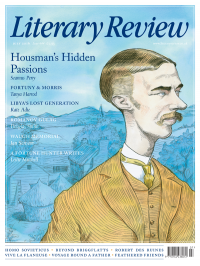Tiffany Jenkins
Mad for Marble
Possession: The Curious History of Private Collectors from Antiquity to the Present
By Erin L Thompson
Yale University Press 224pp £20
In 1793 Henry Blundell, one of England’s pre-eminent antiquities dealers, faced a little problem. While browsing the sale of artwork from the estate of William Ponsonby, the second Earl of Bessborough, he noticed a large Roman statue of a reclining figure, its head thrown back as if asleep. The marble work was in good shape: restored, reasonably complete and, as it had already been ferried from Italy to England, promising no expensive transportation costs.
The slumbering figure had breasts like champagne glasses, one suckled by an infant. Blundell’s problem was that it also had small male genitalia. The statue was ‘an Hermaphrodite, with three little brats crawling about its breast’, he stormed, finding it ‘unnatural and very disgusting to the sight’. It was Hermaphroditus, the son of Aphrodite and Hermes from Greek mythology. Nonetheless, Blundell swallowed his feelings of revulsion and bought the statue. ‘I shall be thought marble mad and very extravagant,’ he remarked, insisting ‘money is better spent so, than at new markets’. The visitor catalogue to his main residence, Ince Blundell Hall, reveals how he solved the issue of the unwanted tissue and appendages: ‘By means of a little castration and cutting away the little brats, it became a sleeping Venus, as pleasing a figure as any in this Collection.’
In her insightful history of the private collectors of Greek and Roman antiquity, Erin Thompson, America’s only full-time professor of art crime, explores how collectors’ desires dramatically changed the fate of antiquities, altering their sex, identity and meaning. Blundell’s ‘castration’ was one of many brutal restorations executed from the Renaissance

Sign Up to our newsletter
Receive free articles, highlights from the archive, news, details of prizes, and much more.@Lit_Review
Follow Literary Review on Twitter
Twitter Feed
It wasn’t until 1825 that Pepys’s diary became available for the first time. How it was eventually decrypted and published is a story of subterfuge and duplicity.
Kate Loveman tells the tale.
Kate Loveman - Publishing Pepys
Kate Loveman: Publishing Pepys
literaryreview.co.uk
Arthur Christopher Benson was a pillar of the Edwardian establishment. He was supremely well connected. As his newly published diaries reveal, he was also riotously indiscreet.
Piers Brendon compares Benson’s journals to others from the 20th century.
Piers Brendon - Land of Dopes & Tories
Piers Brendon: Land of Dopes & Tories - The Benson Diaries: Selections from the Diary of Arthur Christopher Benson by Eamon Duffy & Ronald Hyam (edd)
literaryreview.co.uk
Of the siblings Gwen and Augustus John, it is Augustus who has commanded most attention from collectors and connoisseurs.
Was he really the finer artist, asks Tanya Harrod, or is it time Gwen emerged from her brother’s shadow?
Tanya Harrod - Cut from the Same Canvas
Tanya Harrod: Cut from the Same Canvas - Artists, Siblings, Visionaries: The Lives and Loves of Gwen and Augustus John by Judith Mackrell
literaryreview.co.uk